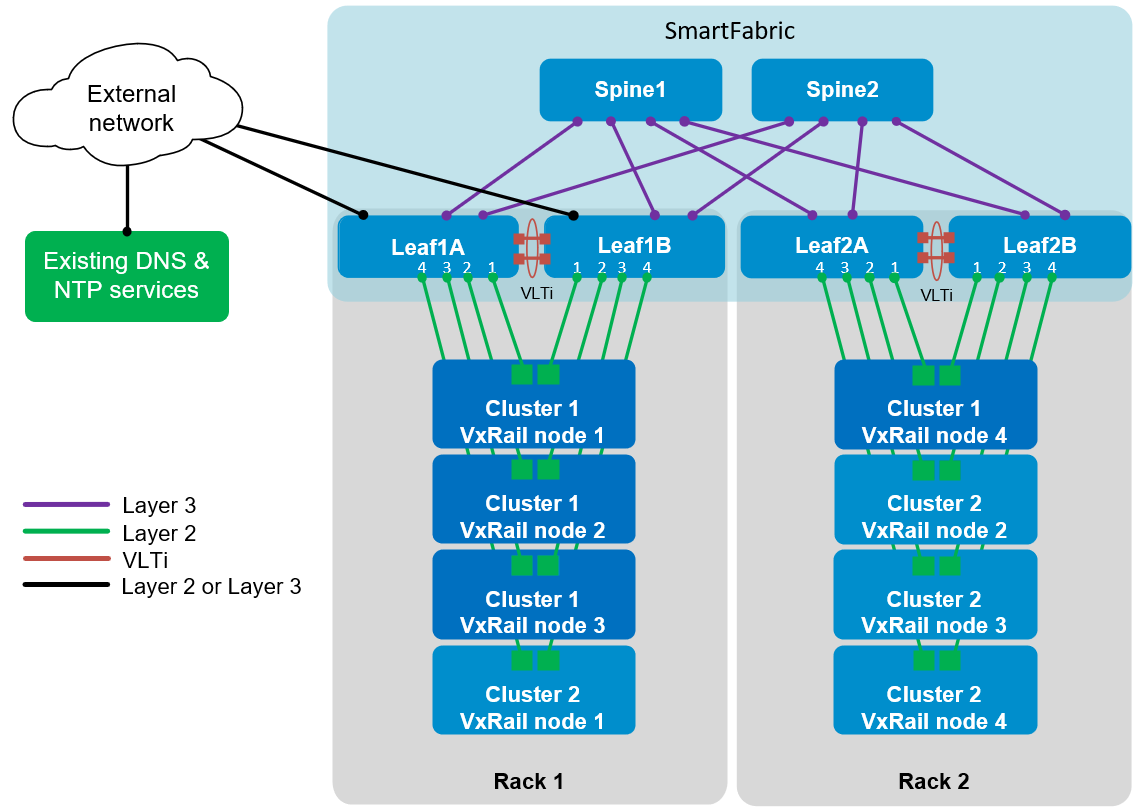The production topology uses a leaf-spine fabric for performance and scalability. SmartFabric Services (SFS) automates the deployment of this fabric.
With SFS, two leaf switches are used in each rack for redundancy and performance. A Virtual-Link Trunking interconnect (VLTi) connects each pair of leaf switches. Every leaf switch has an L3 uplink to every spine switch. Equal-cost multi-path routing (ECMP) is leveraged to use all available bandwidth on the leaf-spine connections.
SFS uses BGP-EVPN to stretch L2 networks across the L3 leaf-spine fabric. This configuration allows for the scalability of L3 networks with the VM mobility benefits of an L2 network. For example, a VM can be migrated from one rack to another without the need to change its IP address and gateway information.
The example in this guide builds two VxRail clusters in two racks, as shown.

The example in this guide builds the SmartFabric with VxRail clusters shown in SmartFabric topology with connections to VxRail nodes and external network in three stages:
- The first stage is a single rack deployment. Leaf switches 1A and 1B are deployed in Rack 1 without spine switches, and a two-leaf fabric is created using SFS. The fabric is connected to the external network using either L2 or L3 uplinks. The external network is typically a preexisting network in the data center. Three VxRail nodes are connected to the two leaf switches, and a three-node VxRail cluster, Cluster1, is deployed.
- In the second stage, two spine switches are added and connected to leaf switches 1A and 1B. Leaf switches 2A and 2B are added in Rack 2 and are also connected to the spine switches. The fabric is expanded to include the two spines and two additional leafs using SFS. A fourth VxRail node is added in Rack 2 and joined to the first VxRail cluster.
- In the 3rd stage, four additional VxRail nodes are connected to the SmartFabric and deployed as a second VxRail Cluster.
